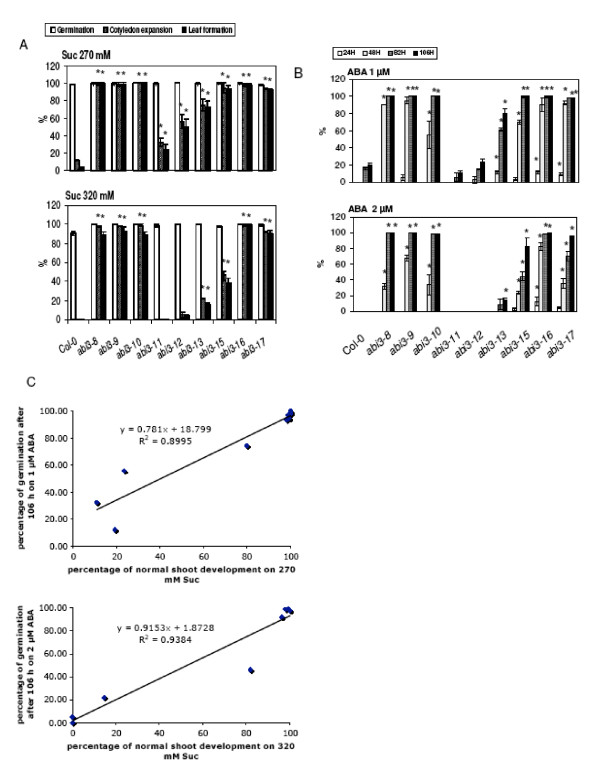Figure 12.
Quantification of Suc and ABA insensitivity in nine abi3 mutants. (A) For Suc-response assays seeds were sown on media containing 270 or 320 mM Suc and incubated at 22°C for 14 d under 2200-3400 Lux continuous light prior to scoring. Seed germination, cotyledon expansion and true leaf formation were scored as previously described [16]. Error bars indicate standard deviations. Asterisks indicate results where the mutant phenotype differed from the corresponding wild-type phenotype with a p-value of less than 0.05 according to a Student's t-test. (B) For ABA response assays seeds were imbibed on media with the indicated ABA concentrations and scored for germination after 24, 48, 82 and 106 h. Seed germination is defined as the emergence of the radicle from the seed coat. Error bars indicate standard deviations. Asterisks indicate results where the mutant phenotype differed from the corresponding wild-type phenotype with a p-value of less than 0.05 according to a Student's t-test. (C) Regression analysis of data on Suc and ABA response assays reveals strong positive correlation between sugar- and ABA- insensitivity. Each data point on the scatterplot represents the percentage of normal shoot development (defined as seedlings with green expanded cotyledons) on Suc media and the percentage of seeds that germinated after 106 h on ABA media for each genotype. Correlation coefficients were calculated for two assay conditions: 1 μM ABA and 270 mM Suc representing relatively non-stringent assay conditions and 2 μM ABA and 320 mM Suc representing more stringent assay conditions.

